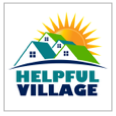Blog archive
October 2023
All Together Now
10/12/2023
September 2023
August 2023
July 2023
The Next Chapter
07/19/2023
June 2023
May 2023
Let's Get Moving!
05/02/2023
April 2023
March 2023
The Wisdom of Seniors
03/13/2023
The Wisdom of Seniors
03/13/2023
February 2023
January 2023
Welcome to the new TEST Blog!
01/26/2023
All Together Now
By Charlotte ZangPosted: 10/12/2023
When I was growing up, my grandmother lived with us. She was a constant presence, helping to raise her seven grandchildren. I can still see her now, standing in the kitchen with an apron over her housedress, welcoming us home from school with a slice of applesauce cake or making biscuits for dinner. She contributed by cooking, cleaning, and watching over the little ones, but it was more than that. She was a calm and steady presence in a sometimes chaotic household as well as a sounding board when one of us was wrestling with a problem. She had a deep repertoire of southern phrases and idioms that she sprinkled over us daily. We needed her. We depended on her. The lessons we learned from her strengthened our foundation, giving us a sense of family history and continuity, and her wisdom often served as a guiding light in troubled times.
We never thought anything of our living arrangement; it was all we ever knew. It turns out that our family was doing what many cultures have done for ages: blending multigenerational families under one roof. This practice is now known as part of the Blue Zone Lifestyle. When explorer Dan Buettner identified Blue Zones as areas around the world where people live longer, he was inspired to determine the reasons for it. His book, The Blue Zones Secrets for Living Longer: Lessons from the Healthiest Places on Earth, identifies those geographic regions and points out the foods and behaviors that help people live long, healthy lives. His Ted Talk, “How to Live to Be 100+” has millions of views.
Buettner says that part of the longevity equation is multigenerational living. When three (or more) generations of a family live together, everyone benefits. Many hands make light work, as the saying goes. But even more powerful is the focus on family, creating strong connections both at home and in the community. Grandparents, parents, and children form a cohesive bond that strengthens relationships. Elderly people are respected and revered for their knowledge while staying active and engaged which in turn, helps them live longer, happier lives. Being part of a family unit also gives a sense of belonging and purpose – both of which are essential to fighting off depression.
The 2020 Census data revealed that there were 6 million multigenerational households in the United States. That’s an increase from 5.1 million since 2010, indicating a growing trend. These extended families pool their resources and absorb the stresses of life together. Living communally reduces the incidence of loneliness and isolation – there’s always someone to talk to! Support comes in many forms, whether that’s financial help, assisting with chores and childcare, or striking up a conversation while playing a game of Scrabble – all of which have a positive effect.
How did we get to the place where fewer extended families reside together? Did the suburban development pattern with its single family homes have an effect on living arrangements? Maybe – but even so, there are ways to adapt and bring families closer. Many homes now have an in-law suite that allows people to have their own space even under the same roof. Some people add an ADU (Accessory Dwelling Unit) on their property. It’s a secondary house or apartment, perfect for extended families, whether that means adult children who need to move back home for a while, a cousin who has relocated for a new job, or grandparents who want to be close to their children and grandchildren.
The Blue Zones have a lot to teach us. Buettner took the principles and behaviors he found in those areas and brought them back to us. He developed the Blue Zone Project® – a proven model for transforming the health of large populations. In the United States, Blue Zone projects have been conducted in Beach Cities, California; Albert Lea, Minnesota; Spencer, Iowa; and Fort Worth, Texas. People living in these communities have experienced double digit drops in obesity, smoking, and BMI. Millions of dollars have been saved on healthcare costs while companies in the area are witnessing measurable drops in employee absenteeism.
If you’d like to know more about Blue Zones in the United States, visit https://www.bluezones.com/services/blue-zones-project/#section-1.


